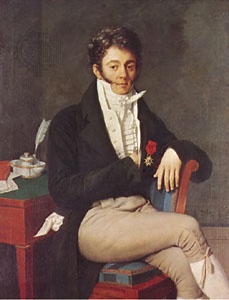shirt
clothing
 any of a variety of garments having sleeves and worn on the upper part of the body, often under a coat, jacket, or other garment. Shirts were worn as early as the 18th dynasty of ancient Egypt (Egypt, ancient) (c. 1539–1292 BCE); they were made of a rectangular piece of linen, folded and sewn up the sides, with openings left for the arms and a hole cut at the fold for the head. There are also shirts preserved from ancient Egypt that have long, tight sleeves sewn into the armholes.
any of a variety of garments having sleeves and worn on the upper part of the body, often under a coat, jacket, or other garment. Shirts were worn as early as the 18th dynasty of ancient Egypt (Egypt, ancient) (c. 1539–1292 BCE); they were made of a rectangular piece of linen, folded and sewn up the sides, with openings left for the arms and a hole cut at the fold for the head. There are also shirts preserved from ancient Egypt that have long, tight sleeves sewn into the armholes.Toward the end of the Middle Ages, when clothing became rather closely fitted, the shirt gradually increased in importance. During the 14th century, shirts worn by the Normans (Norman) developed a neckband and cuffs. By the end of the 15th century, shirts were made in a variety of fabrics, such as wool, linen, and sometimes silk, for royalty.
Shirts began to be embellished with embroidery, lace, and frills in the 16th century, and men's outer garments—the doublet, or jacket—had a low neckline so that the shirt showed across the chest. By the end of that century, the shirt frill had developed into the ruff, which was a mark of the aristocracy. A law, in fact, was passed in England that forbade persons without social rank from wearing elaborately decorated shirts. At the beginning of the 17th century, the doublet had become so short that the ruffled shirt was visible between it and the breeches. The new style of men's dress initiated in 1666, when Charles II of England adopted the long waistcoat, however, covered up most of the shirt.
In the late 18th and early 19th centuries, the neckcloth was so elaborate and voluminous that the valet of English dandy Beau Brummell (Brummell, Beau) sometimes spent a whole morning getting it to sit properly. Brummell set the mode in 1806 for the ruffled shirt for both day and evening wear. Men's clothing became more sombre in the Victorian age. High neckcloths were abandoned for collars and ties more or less the same as those worn in the 20th and 21st centuries. Men's shirts in the 1960s were made in a variety of stripes, patterns, and colours previously not worn. In the 20th century, women's shirts were made on lines similar to men's, though they usually included darts in the back and in the front to make them more form-fitting.
- Uruguaiana
- Uruguay
- Uruguay, flag of
- Uruguay River
- Urābī Pashaʿ
- Usa
- US Airways
- U.S.A. National Baptist Convention, Inc.
- U Saw
- USB
- USBC bowling championships-open division
- USBC bowling championshipswomen
- U.S. Corporate Bond Yields, Table
- U.S. Corporate Bond Yields, Table 1
- use
- USENET
- Userkaf
- Uses of spices and herbs with foods
- use tax
- U.S. Factory life and rules at Lowell, Massachusetts
- U.S. Government Long-Term Bond Yields, Table
- U.S. Government Long-Term Bond Yields, Table 1
- U.S. Grant: Letters to W.T. Sherman
- ushabti figure
- Ushak carpet